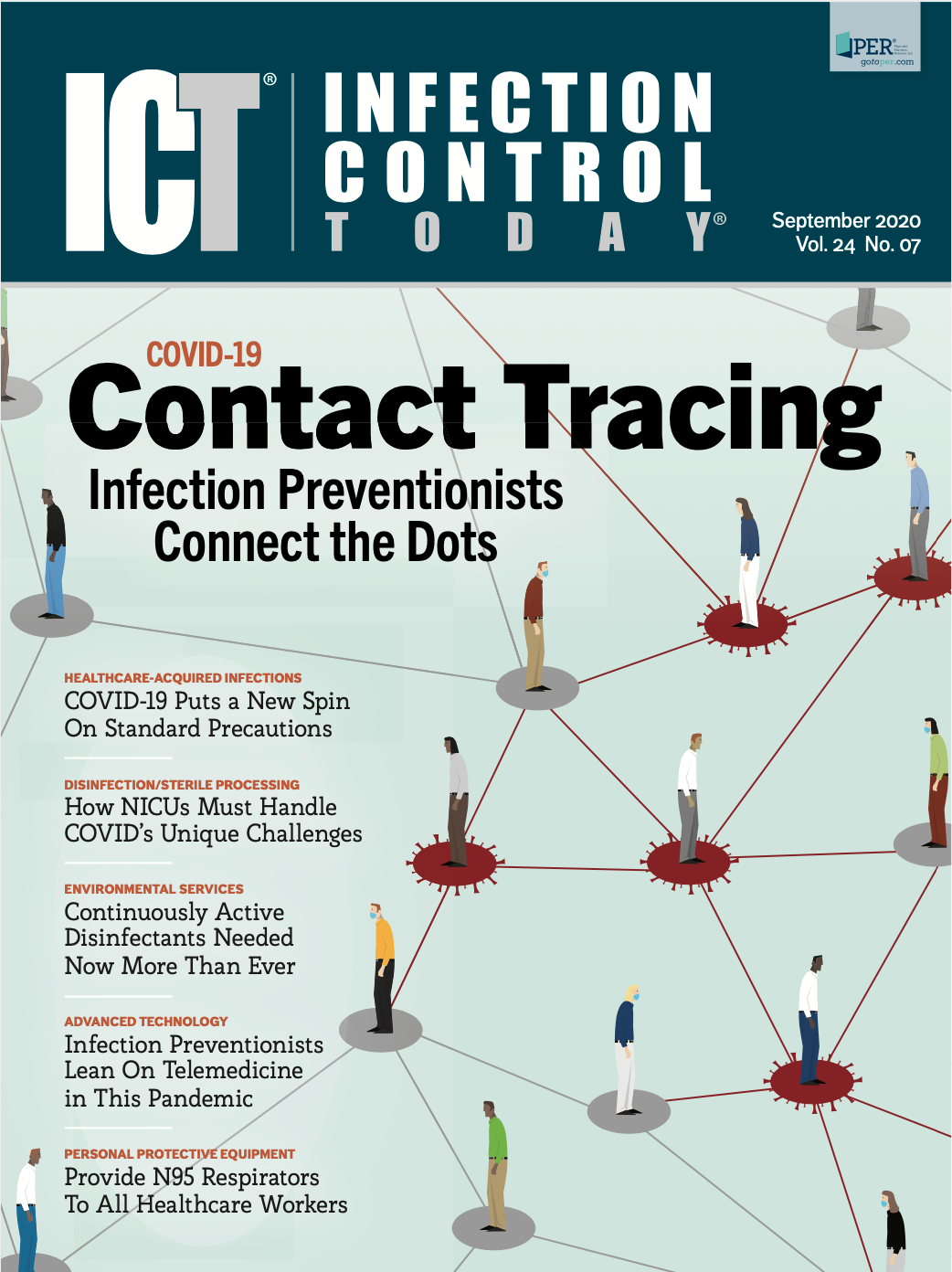Continuously Active Disinfectants Can Keep COVID at Bay
Charles P. Gerba, PhD: “Unfortunately, standard procedures for testing and registration by regulatory agencies of CADs (continuously active sanitizers or disinfectants) as disinfectants useful in preventing exposure to disease causing microorganism transmission has only taken place in recent years.”
Currently, the United States Environmental Protection Agency (EPA) registered products that claim long-lasting effectiveness are limited to those that control odor-causing bacteria on hard non-porous surfaces. The agency is currently reassessing changes that may allow such claims in response to the current coronavirus disease 2019 (COVID-19) pandemic. Unfortunately, standard procedures for testing and registration by regulatory agencies of continuously active sanitizers or disinfectants (CADs) as disinfectants useful in preventing exposure to disease causing microorganism transmission has only taken place in recent years.
Charles P. Gerba, PhD

The EPA developed a protocol for evaluating bactericidal activity on nonporous copper containing surface alloys and one-for-one for claiming a residual self-sanitizing activity of dried chemicals on hard, non-poroud surfaces. These methods also simulate contact and touching by incorporating “wear” of the test surface as well as re-inoculation of the test microorganism. However, more progress is needed in this area to develop standard procedures that would also allow a better reflection of the advantages in terms of benefits in reducing the risk of infection with treated surfaces.
Quantitative microbial risk assessment is an approach that has been used to demonstrate reduced risk of infection from a continuous acting hand sanitizer over time. Using this approach, it was demonstrated that four hours after hand application the sanitizer reduced the probability of infection if the hand was re-contaminated with norovirus by 78%.
Recent epidemiological studies have suggested that CADs can reduce the bacterial bioburden on surfaces in healthcare environments and hospital acquired infections. Assessment of a quaternary ammonium polymer coating in intensive car units was found to result in the absence of antibiotic resistant bacteria on surfaces for three months in one study and in a follow-up study a 36% decline in hospital-acquired infection (HAI) was observed. Several studies with copper surfaces have also shown similar results and suggested a reduction in HAIs in hospitals.
The potential for CADs has taken on new importance with the Covid-19 pandemic. Protecting exposure via surfaces in facilities used by large numbers of individuals becomes challenging. This is especially true in schools, universities, mass transport, recreational facilities, etc. The amount of resources and practicality of disinfecting facilities between use by different individuals appears insurmountable in many cases. Recent studies have shown that SARS-CoV-2 that CADs can be effective against this virus both on hard surfaces and fabrics and may be useful in filling this need.
CHARLES P. GERBA, PhD, is a professor of environmental microbiology in the Department of Environmental Science, and Environmental and Community Health at the University of Arizona. He serves on the Advisory Boards of PDI and Allied Bioscience.

Endoscopes and Lumened Instruments: New Studies Highlight Persistent Contamination Risks
May 7th 2025Two new studies reveal troubling contamination in both new endoscopes and cleaned lumened surgical instruments, challenging the reliability of current reprocessing practices and manufacturer guidelines.
Happy Hand Hygiene Day! Rethinking Glove Use for Safer, Cleaner, and More Ethical Health Care
May 5th 2025Despite their protective role, gloves are often misused in health care settings—undermining hand hygiene, risking patient safety, and worsening environmental impact. Alexandra Peters, PhD, points out that this misuse deserves urgent attention, especially today, World Hand Hygiene Day.
I Was There: An Infection Preventionist on the COVID-19 Pandemic
April 30th 2025Deep feelings run strong about the COVID-19 pandemic, and some beautiful art has come out of those emotions. Infection Control Today is proud to share this poem by Carmen Duke, MPH, CIC, in response to a recent article by Heather Stoltzfus, MPH, RN, CIC.
From the Derby to the Decontam Room: Leadership Lessons for Sterile Processing
April 27th 2025Elizabeth (Betty) Casey, MSN, RN, CNOR, CRCST, CHL, is the SVP of Operations and Chief Nursing Officer at Surgical Solutions in Overland, Kansas. This SPD leader reframes preparation, unpredictability, and teamwork by comparing surgical services to the Kentucky Derby to reenergize sterile processing professionals and inspire systemic change.